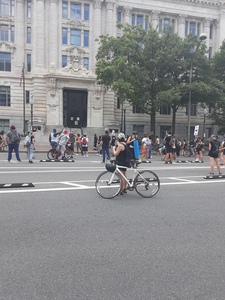10 signatures reached
To: District of Columbia Government
The Vacant to Virus-Reduction plan

Our data showing:
A VACANCIES
As of November 15, 2019, DC had almost 10,000 vacant apartment units across about 3000 buildings.
B. UNHOUSED
In January 2019, 6,521 people were counted as homeless on one given night during the annual point in time count, though that number is low: In the 2018-2019 school year, 7,728 different elementary and secondary education students in DC identified as experiencing homelessness.
Our plan
• Use vacant properties to house the unhoused.
Why you ask?
o There is an acute need to give people physical space in order to properly social distance and reduce transmission of COVID-19. There has been an acute need to house people in the nation’s capital – a place with one of the highest per capita rates of homelessness in the country.
Why is this important?
How do we get there:
• Make the financing work.
DC routinely gives money and land to companies to finance development projects, in attempts to stimulate economic development. Why not use this same tactic to spur economic development by providing housing stability, and thus healthcare, to people who are currently not housed or who are housing unstable?
Biggest take away here:
Use Public Subsidy formulas given to developers and property managers to be used and applied to individuals and families to finance emergency efforts to reduce use of large congregate settings for people experiencing homelessness with chronic health conditions
